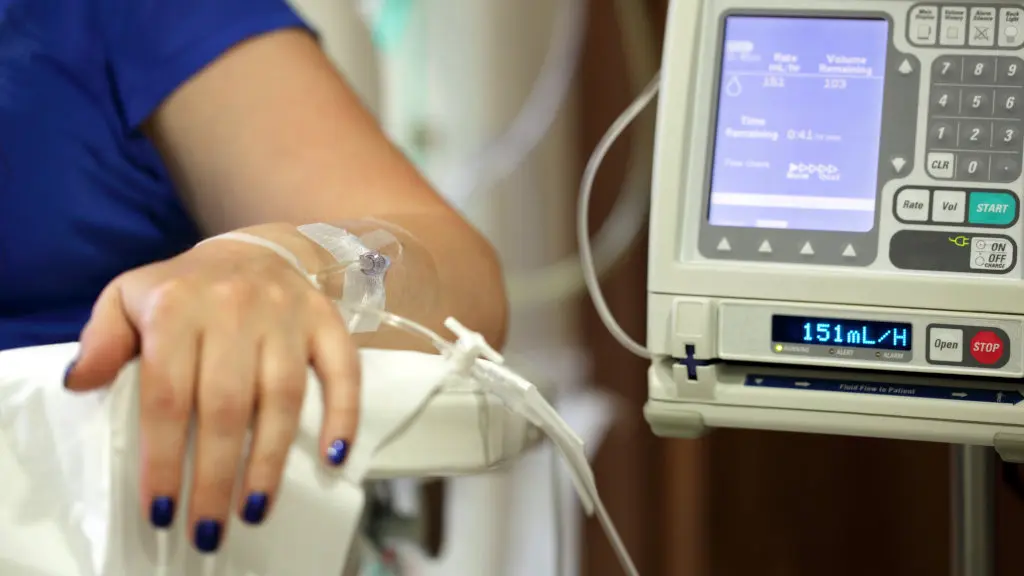Alcohol withdrawal is what happens when a person suddenly stops or significantly reduces drinking after prolonged, heavy alcohol use.
The body becomes accustomed to the presence of alcohol, and when the alcohol is no longer present, the body experiences a shock and requires stabilization. For some, the process is mild, while others may experience severe symptoms.
About 50%
Of people with alcohol use disorder experience alcohol withdrawal.
This resource offers details on the alcohol withdrawal process: what to expect, how to manage withdrawal, and best next steps for treating alcohol use disorder.
AWS Key Facts
- Alcohol withdrawal is the stabilizing process that the body undergoes when you stop or significantly reduce prolonged, heavy drinking.
- Alcohol withdrawal effects range from mild to severe, and some people are at higher risk than others.
- Alcohol withdrawal may last up to one week, starting around six hours after the last drink.
- Alcohol withdrawal assessments measure the severity of withdrawal and help guide treatment.
- Treatment options for withdrawal include medications, inpatient treatment and outpatient care.
- For long-term recovery, follow-up treatment for alcohol use disorder is crucial post-withdrawal.
What Is Alcohol Withdrawal, also Known as Alcohol Withdrawal Syndrome (AWS)?
Alcohol withdrawal syndrome (AWS) happens when there is a sudden reduction or cessation of alcohol consumption following long-term use. After prolonged exposure your body grows dependent on alcohol. The central nervous system (CNS) adjusts over time to the presence of alcohol.
The Biology Behind Why It Happens
Two brain chemicals in particular are involved in alcohol withdrawal syndrome: GABA and glutamate.
GABA (gamma-aminobutyric acid) is a neurotransmitter, or messenger, in the brain that calms the central nervous system. Drinking alcohol causes an initial increase in GABA, but long-term use eventually causes GABA production to decrease. This can result in poor sleep, anxiety, agitation and irritability.
Alcohol consumption also triggers an increase in glutamate, which is a neurotransmitter that controls excitability. When alcohol is no longer present to affect these chemical levels, they rebound. This causes autonomic hyperactivity putting the brain in an overactive state. The result is alcohol withdrawal syndrome.
Hangovers vs. Alcohol Withdrawal Syndrome
Note: AWS is not the same as a hangover.
A hangover happens after consuming more alcohol in a short period than the body can process. After the blood alcohol concentration (BAC) level returns to zero you experience hangover symptoms such as headache and nausea that resolve within 24 hours without treatment.
AWS is tied to chronic, heavy alcohol use. It is the result of chemical changes that alcohol use causes in the body. It generally produces more severe and longer-term symptoms which often require treatment to manage safely.
How Serious Is Alcohol Withdrawal Syndrome?
While some individuals experience only mild symptoms of alcohol withdrawal, the syndrome can cause life-threatening complications. These include seizures and delirium tremens (the most severe form of alcohol withdrawal, which can cause tremors, hallucinations, and life-threatening levels of autonomic hyperactivity).
Individuals who have gone through alcohol withdrawal multiple times are at risk of the alcohol kindling effect. This is a condition where the body has become extra sensitive to the effects of withdrawal, due to the repeated increases and decreases in neurotransmitters.
This sensitivity causes withdrawal symptoms to worsen each time a person experiences withdrawal. Like a campfire prepped with kindling, the previous withdrawal episodes have prepped the individual for a bigger “fire” of symptoms.
Call A Treatment Provider
For a conversation about what treatment options are available to you.
Make a Call
Who Is At Highest Risk?
Withdrawal symptoms can pose health risks to anyone experiencing AWS. However, some individuals are at higher risk than others.
Individuals in the following categories can be at higher risk from symptoms of alcohol withdrawal syndrome:
- Older adults
- Individuals with liver or cardiac disease
- Pregnant women
- People who abuse more than one substance (polysubstance use)
- Those who abuse benzos (because alcohol and benzos are both sedatives)
Alcohol Withdrawal Side Effects
Alcohol withdrawal side effects range from mild to severe. Following are the most common effects.
- Seizures: Withdrawal is caused by overactivity in the brain due to a sudden chemical imbalance. This hyper-excitability can cause seizures.
- Headaches: The sudden increase in brain chemical activity can cause withdrawal headaches. Blood pressure changes and stress from withdrawal can also contribute to headache pain.
- Fatigue: Stabilization during withdrawal requires energy. Other symptoms, such as insomnia and flu-like symptoms, can add to fatigue.
- Insomnia: It is common to experience insomnia, disrupted sleep, or other sleep quality issues during withdrawal. Alcohol, and the neurotransmitters it affects, can interrupt or change sleep patterns.
- Night sweats: The central nervous system’s over-activity during withdrawal can cause changes in body temperature, hormone levels, and perspiration. These effects can cause night sweats, which are episodes of heavy sweating while sleeping.
- High blood pressure: The hyperactivity of the central nervous system can cause an increase in blood pressure.
- Diarrhea: AWS also affects the gastrointestinal system, which can cause diarrhea.
- Stomach pain: This can range from dull aching to sharp pains. Stomach pain is the result of the reaction of the gastrointestinal system when alcohol consumption ceases.
- Itching: The withdrawal process can cause the body to produce histamine, which can cause itchy skin.
- Fever: As the body tries to establish equilibrium, the immune system may respond by increasing body temperature, causing a fever.
Alcohol Withdrawal Timeline

Alcohol withdrawal can begin as early as six hours after the last drink. Symptoms tend to peak within one to three days. However, some symptoms can persist for up to one week, and others can linger for several weeks.
Here’s what to expect:
6–24 Hours
During the first few hours of withdrawal, it is common to experience symptoms related to the autonomic system’s reaction to the absence of alcohol.
These include:
- Tremor/Shaky hands
- Tachycardia
- Hypertension
- Anxiety
- Restlessness
- Vomiting
- Headache
- Alcohol hallucinosis
24–48 Hours
During this timeframe, the risk for seizure peaks. Other autonomic symptoms listed above persist. Insomnia is also common.
Due to the risk of seizures and complications from other symptoms, it is important to receive consistent monitoring and appropriate care. This is particularly crucial if risk factors are present, such as other health issues or possible kindling.
48–72 Hours+
During this window, individuals are at risk of delirium tremens (DTs). This causes disorientation, severe agitation, and diaphoresis (excessive sweating). Only around 1-1.5% of people who experience AWS suffer from DTs. If this does occur, it can last up to five to seven days.
Note: Some protracted issues such as cravings and sleep or mood disturbances can linger for weeks.
Alcohol Withdrawal Assessment (CIWA-Ar)
The Clinical Institute Withdrawal Assessment for Alcohol (CIWA-Ar) is a tool used by clinicians to determine the severity of the symptoms a person experiences during alcohol withdrawal.
The CIWA-Ar looks at 10 domains:
- Nausea and vomiting
- Tremor
- Sweats
- Anxiety
- Agitation
- Tractile disturbance
- Auditory disturbance
- Visual disturbance
- Headache
- Orientation
Each of these symptoms is rated on a point scale. Based on the total points, clinicians determine the severity of withdrawal. This score guides a healthcare provider decision making about withdrawal medications and other treatment options.
CIWA-Ar Scores
- Mild 0-9: If the score is nine or less, withdrawal is mild, and medications typically are not necessary.
- Moderate 10-18: Withdrawal medications may be necessary at this level.
- Severe 19+: At this severe withdrawal level, medications are most likely necessary.
If reliable scoring and safe monitoring are available, scheduled or symptom-triggered benzodiazepine dosing is often preferred for treatment of severe withdrawal.
Note: Thresholds at each level may vary based on institution and region.
Medications for Alcohol Withdrawal
When AWS is moderate or severe, healthcare providers often prescribe medications to treat withdrawal symptoms.
First-Line: Benzodiazepines
Benzodiazepines stimulate GABA-A receptors which have been depressed by alcohol use. They are a first-line defense for AWS as an effective and safe treatment. Common benzos incorporated into AWS treatment include the following medications.
These may be prescribed during withdrawal to prevent seizures and DTs and to provide light sedation. They must be used with caution to avoid respiratory compromise.
- Diazepam (Valium)
- Chlordiazepoxide (Librium)
- Lorazepam (Ativan)
- Clonazepam (Klonopin)
Other Withdrawal Medications
In addition to benzodiazepines, clinicians may prescribe one or more of the following to treat AWS symptoms.
- Gabapentin: This helps calm the nervous system to lessen symptoms such as anxiety, sweating, and headaches.
- Phenobarbital protocols: Phenobarbital targets GABA receptors as benzos do, but it also suppresses glutamate receptors.
- Clonidine and beta-blockers: These are antihypertensive drugs that treat autonomic symptoms such as blood pressure and heart rate.
- Antipsychotics: These may be prescribed for severe agitation but are not prescribed alone.
- Thiamine: Thiamine deficiency, which can cause cognitive impairments, is common among individuals with alcohol dependence.
- Supplements: Magnesium and phosphate deficiencies are also common among alcohol withdrawal patients. These electrolytes may be provided to restore balance and help the body regulate.
As researchers continue to explore potential uses of cannabis, THC (the psychoactive compound in cannabis) has surfaced as a potential treatment for AWS.
However, research thus far has revealed it is not an effective treatment. Researchers have found that any cannabis use during treatment was associated with fewer days of sobriety from alcohol.
Levels of Care & Detox Settings
A full continuum of care is available for those experiencing alcohol withdrawal. The American Society of Addiction Medicine (ASAM) outlines levels of care based on patient need.
These range from outpatient management with limited monitoring to inpatient and medically managed intensive care for severe or complicated withdrawal.
When to Go to the ER or Get Inpatient Treatment
For many people, it is not safe to go through alcohol withdrawal at home. If any of the following symptoms occur, emergency or inpatient treatment is required:
- Seizures
- Hallucinations
- Confusion
- High fever
- Severe tremor
- Unstable vitals
It is best for individuals at highest risk of potential life threatening symptoms to seek inpatient detox care from the outset of alcohol withdrawal.
This includes individuals who have:
- Prior complicated withdrawal
- Heavy daily alcohol intake
- Serious medical/psychiatric comorbidity
- Pregnancy
- Limited supports
What About Outpatient or At-Home Detox?
Individuals with mild to moderate AWS may be eligible for outpatient or at-home alcohol detox.
However, this is only true if they are not at risk for severe symptoms due to other contributing factors, and they have a strong support person on hand.
To consider outpatient or at-home alcohol detox, the following safety checklist should be in place:
- Written plan
- CIWA-guided monitoring
- Reliable support person present 24/7
- Emergency contacts and transport
- No unsupervised alcohol tapering
- Stable home environment with limited triggers and safe storage of medications
- Pre-screening for medical/psychiatric comorbidities, pregnancy, or polysubstance use
After Withdrawal: Next Steps for Treating Alcohol Use Disorder
For those in recovery from alcohol use disorder, withdrawal is the first step. After detox has addressed physical dependence, it is crucial to seek treatment for the psychological aspects of alcohol addiction.
Several options are available.
- Inpatient rehab programs provide 24-hour follow-up care after detox for ongoing recovery efforts.
- Treatment typically includes individual and group counseling and may include medication.
- Outpatient programs offer clinical supervision while you live at home.
- These programs vary in intensity, from partial hospitalization programs to intensive outpatient programs, to general outpatient care.
FDA-Approved AUD Medications

The FDA has approved three medications for the treatment of alcohol use disorder.
- Naltrexone: Also known by the brand name Vivitrol, this medication is designed to reduce alcohol use by blocking the euphoric effects of alcohol, thus reducing cravings. Individuals who have acute hepatitis or are also using opioids should not take naltrexone.
- Acamprostate (Campral): This medication is prescribed to help patients maintain abstinence from alcohol. Dosage is modified for those with renal conditions or renal failure.
- Disulfiram: Patients who are highly motivated may take disulfiram to discourage alcohol use. When a patient who is on disulfiram drinks even small amounts of alcohol, the drug causes adverse side effects such as nausea, headache, and difficulty breathing.
Behavioral Therapies
While medications help address the ongoing physical aspects of addiction, behavioral therapies should be included to address the mental and emotional side of recovery.
Participants develop skills to manage issues with sleep, mood, trauma, and relapse triggers. Some of the most common therapeutic methods applied during alcohol use disorder treatment include:
- Cognitive behavioral therapy (CBT): During CBT, patients identify thought patterns and behaviors that have led to addiction and develop ways to change those patterns.
- Motivational enhancement therapy (MET): This psychotherapeutic approach helps participants identify and address any resistance or doubts toward treatment. This increases their motivation for additional therapy and recovery.
- Contingency management: This treatment method provides incentives or rewards for patients who reach treatment goals. For example, they may earn cash or a voucher for a negative toxicology screen.
Recovery Supports
A strong support network is important during alcohol use disorder recovery.
12 Step groups often provide a source of community, accountability, and encouragement for those in recovery. Family members, employers, and friends can also provide support for long-term sobriety. These supports are foundational to building recovery capital.
Recovery capital consists of all the resources available to maintain sobriety long-term. By building up capital, individuals have greater support systems to prevent relapse.
They have multiple sources to rely on when challenges arise. Recovery capital includes physical, human, social, and cultural aspects.
Examples of recovery capital can include:
- Self-help/12 Step groups (AA, SMART)
- Housing (affordable housing, sober living homes)
- Education (college classes, vocational courses)
- Employment (employee assistance programs, job-finding supports)
- Peers (sober network for socializing and accountability)
- Volunteering (giving back, mentoring)
Community organizations, rehab facilities, friends, and family may provide opportunities to tap into these supports.
Alcohol Withdrawal FAQs
Alcohol withdrawal typically lasts two to five days. However, some symptoms can persist for weeks. The duration varies based on comorbidities, the severity of alcohol use, and the individual’s history of withdrawals.
Alcohol withdrawal begins six to 12 hours after the last drink and usually starts with tremors, anxiety, sweating, and tachycardia. Early recognition of these symptoms allows for safer, earlier intervention.
Untreated delirium tremens (DTs) and seizures carry a mortality risk. Prompt care reduces this risk dramatically, so it’s critical to seek emergency help if symptoms include confusion, seizures, uncontrolled agitation, or fever.
At-home detox may be a possibility for low-risk patients. This requires clinician supervision with daily follow-up, as well as a support person at home, access to emergency care, and no self-directed alcohol tapering.
Find Treatment Near You
Safe, effective treatment is available for alcohol withdrawal and alcohol use disorder.
Addiction Centers Nearby that Treat Alcholism
Finding facilities near you…




